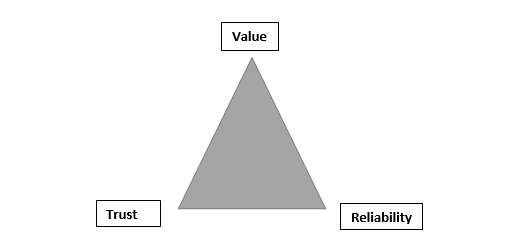Key Areas of Blockchain
As we know that Blockchain is the backbone of the technology of digital cryptocurrency (Bitcoin). The Blockchain contains all transaction records which are stored in a distributed database; it even contains records of digital events shared or executed between the participating parties. It contains each & every transaction that has been done. The participants of that particular system verify each transaction which is done.
Bitcoin doesn't use any third-party banks in between. All the credit goes to technology such as decentralization (we studied in the previous article) & Blockchain, which have been implemented in Bitcoin to validate these transactions, and Bitcoin uses peer-to-peer.
There are two parts to each block of the Blockchain.
Header
A header consists of the previous block hash value to maintain or continue the chain integrity. It also contains a hash of the present block body to the integrity of transactions data, blocks number, nonce (number only used once), a timestamp, the address of the Blockchain & who has created the block, & some more information requested.
Body
A body contains a minimum of one transaction, and the maximum can be any transaction in a particular block of a body.
There were 3 things that the internet was unable to do, or the internet was not designed that way, but Blockchain technology fixes them all. The 3 things are as follows:
- Value
- Trust
- Reliability
Value
In the Blockchain, one can create real value on a digital asset. The value created can be controlled by the person who has created it & owns it. It is a unique asset, and the value created can be controlled by that person.
Trust
Every business or organization trusts their employees to contribute better to the particular field, and a business or organization must earn the trust of employees and customers to go up. Getting ownership of digital assets or currencies in Blockchain allows seeing who is holding the control of the assets at a particular time & this process is highly secure. Blockchain creates a secure, unaltered, permanent record of what all is owned. Advance hash cryptography is used to maintain the integrity of information.
Reliability
Blockchain connects many computers in this world & the workload is shared between those computers. But keeping (localizing) keeping everything in one place helps us to increase the reliability & we know that if everything is located at one place. But Blockchain uses a decentralized architecture that helps the entire system not come to a halt and a centralized system or infrastructure keeps the complete system running & up.

Let us discuss some applications of Blockchain after knowing key areas of Blockchain.
Money transfer
The main concept of Blockchain invention is still a great application to date. We can transfer money using Blockchain, which is faster & less expensive when compared to the existing money transfer services. Even in forward countries like the US, sometimes money transfer takes days to complete, but Blockchain does it in minutes.
Insurance
There are smart contracts which are available on Blockchain & provide complete transparency for insurance providers & customers.
Real estate
As we know that real estate transactions contain a lot of paperwork to verify whether all the information provided is correct & after this, the deeds are transferred to the new owner. But using Blockchain technology to record & keep all the records of real estate transactions makes it more accessible for verifying, more secure & easy to transfer.
Secure personal information
Blockchain technology can be used to secure personal information, give secure access to identify the information, & giving access to those who need it in their industry (healthcare, education, finance & travel).
Data storage
If we add Blockchain technology to data storage, it will provide great integrity and security. It would be more difficult to hack if the data is stored in a decentralized manner.
Logistics & supply chain tracking
If Blockchain technology is implemented in logistics & supply chain tracking, there are several advantages. It will ease communication between the partners; data is secure and available on a secure public ledger. Data on the Blockchain can't be altered; thus, it provides much more security and data integrity.